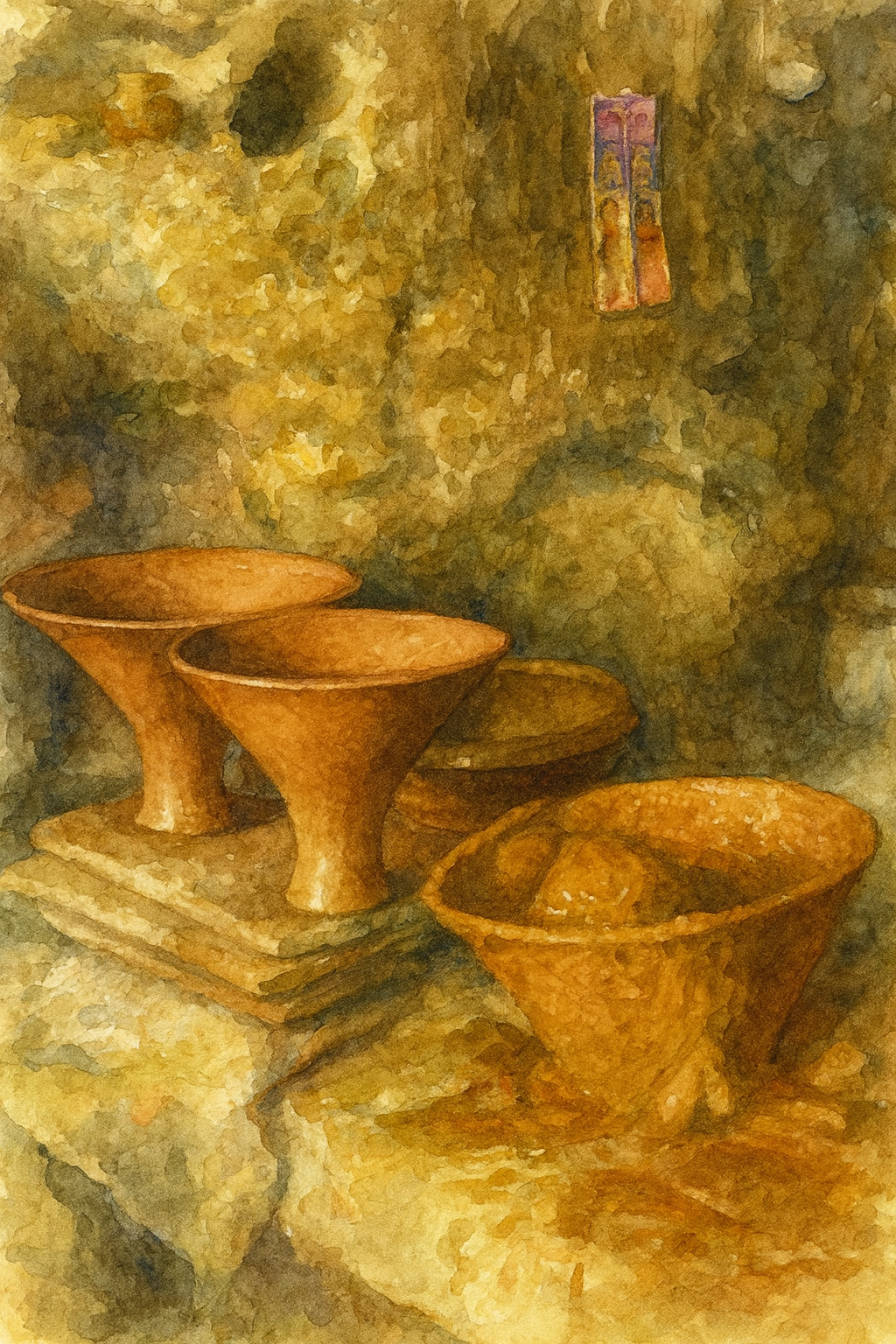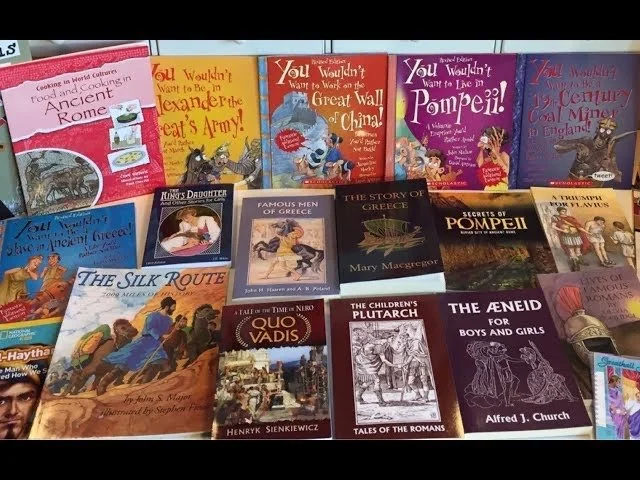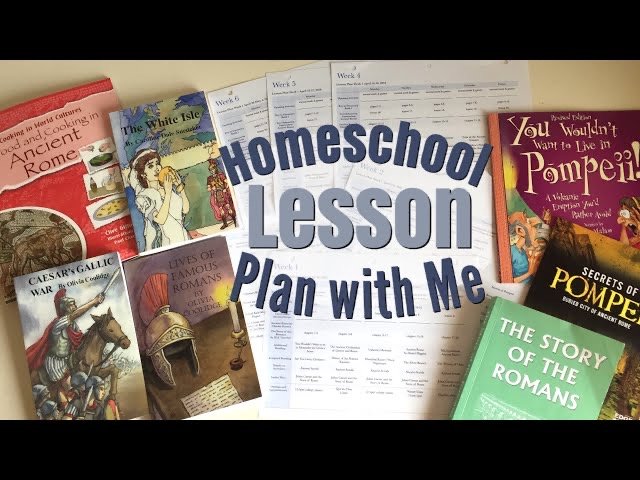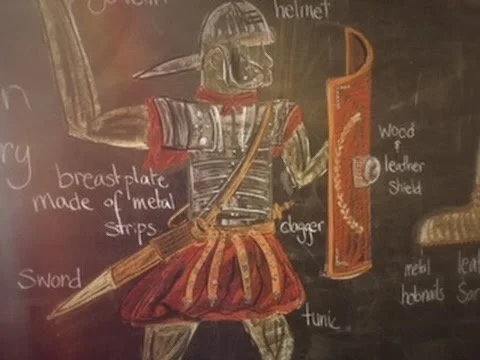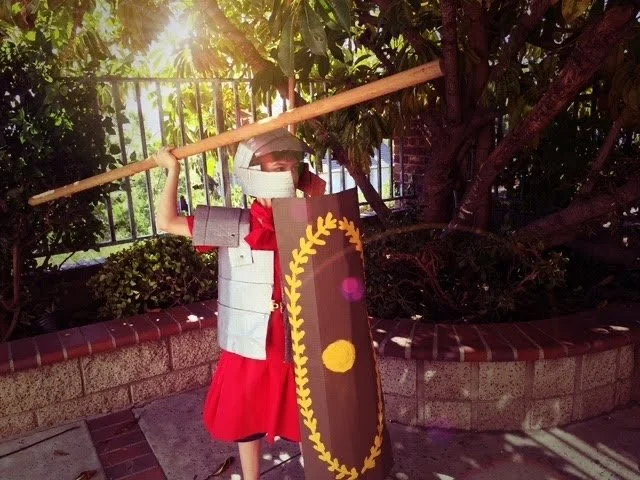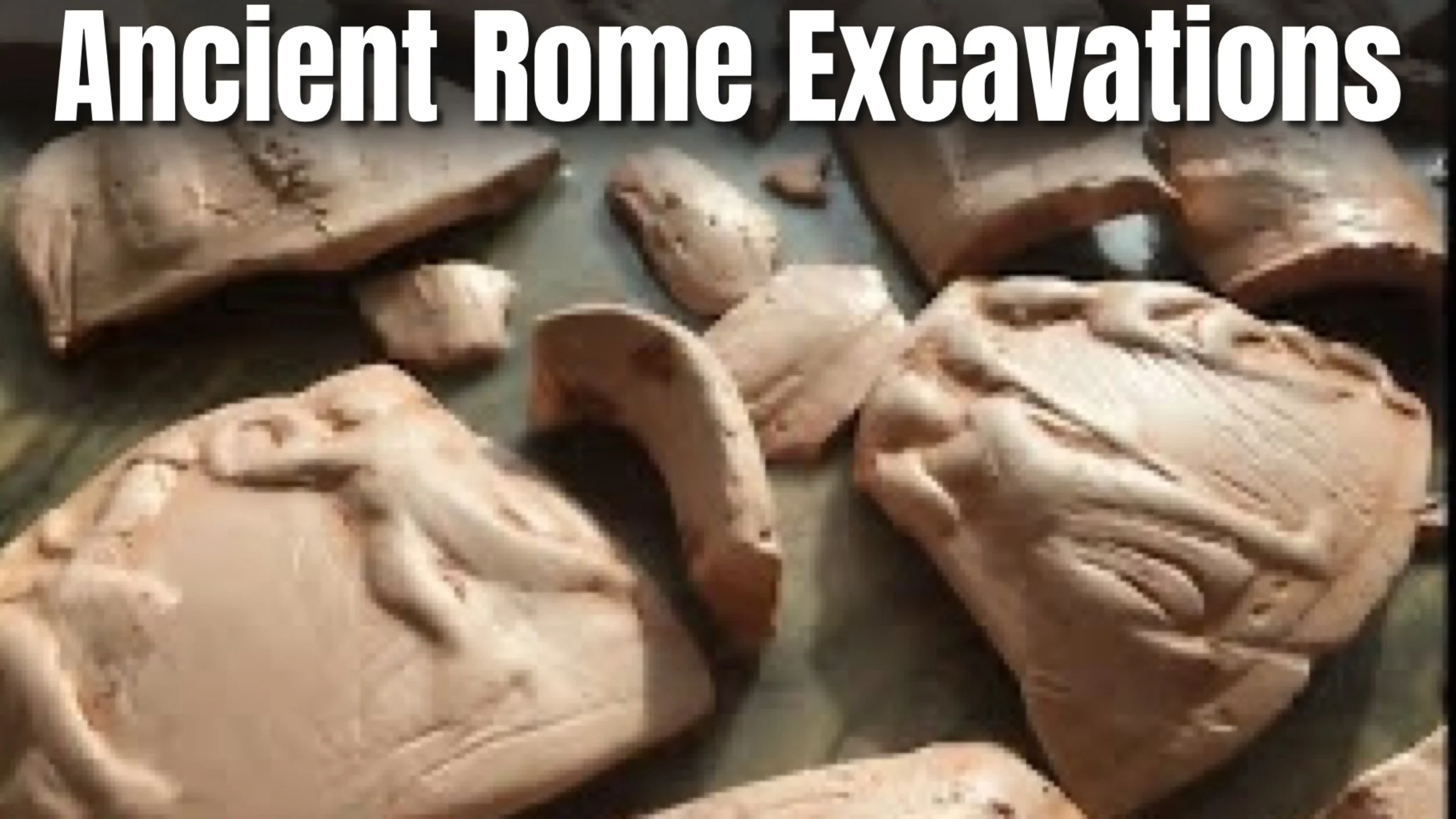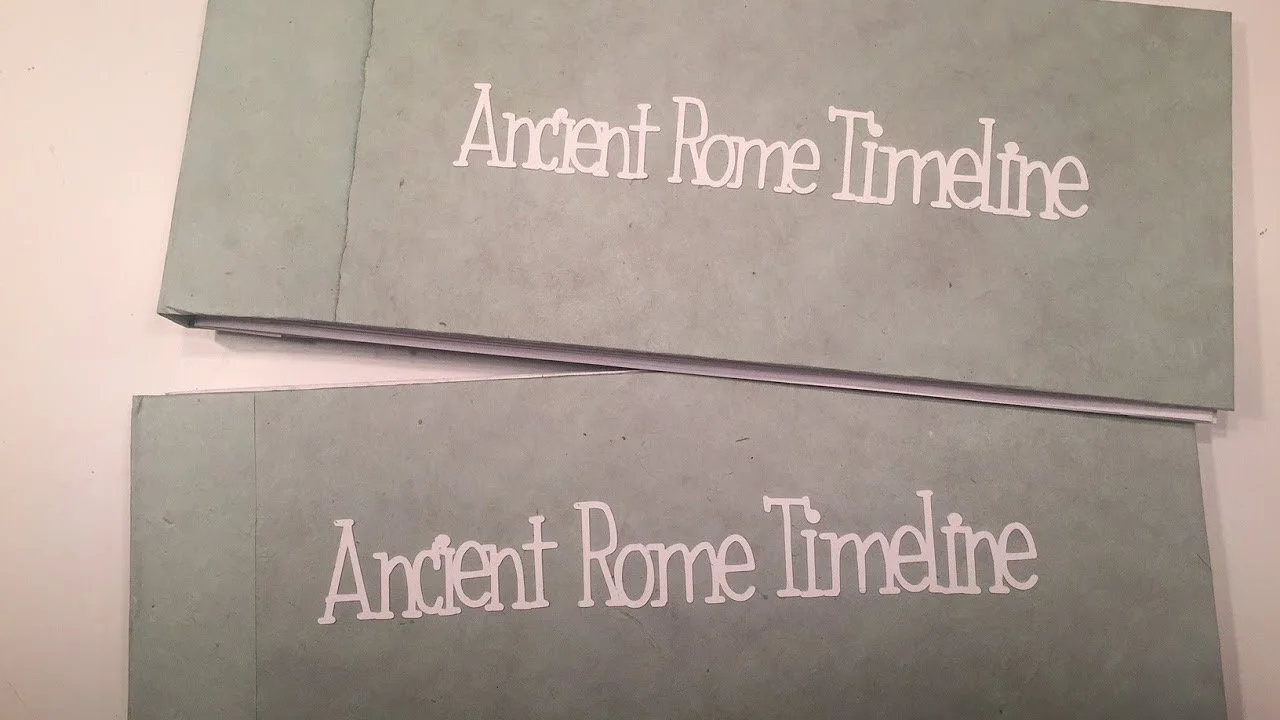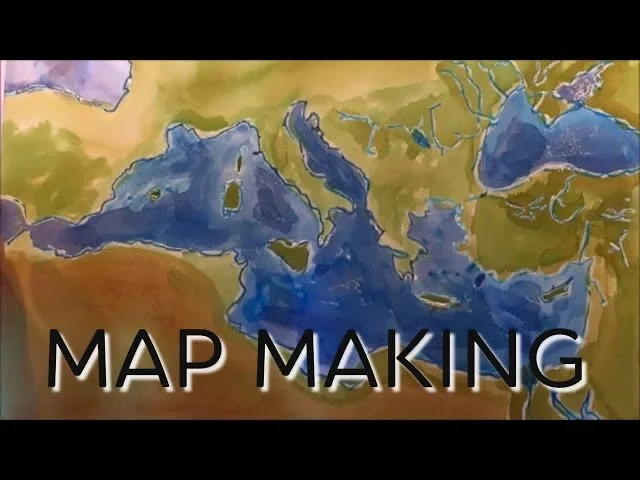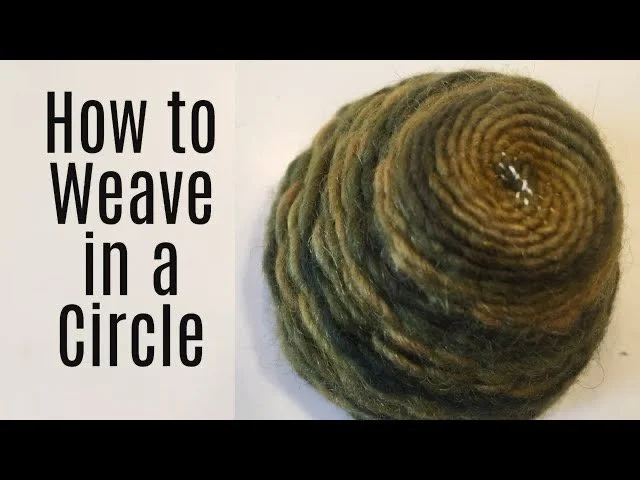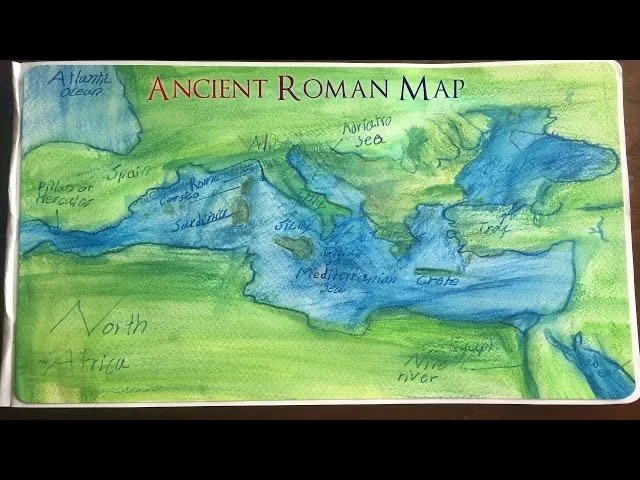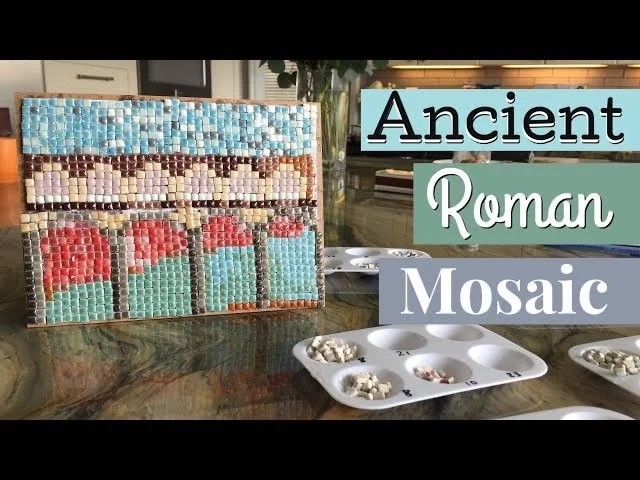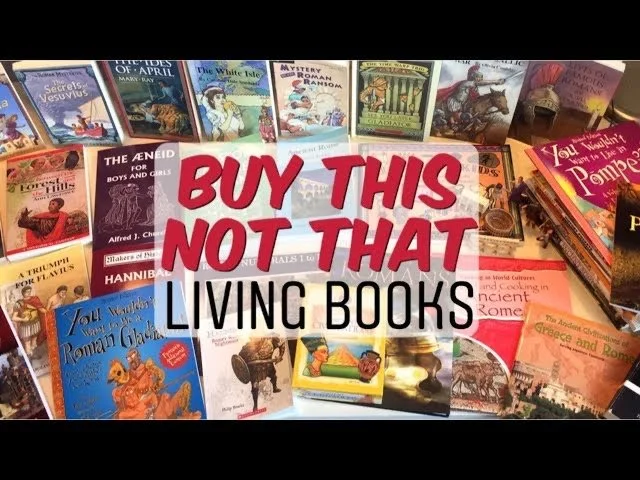
Ancient Rome
Ancient Rome
In the Waldorf pedagogy, the study of Rome is introduced in Grade 6 to students 11-12 years of age. The study of Rome follows the study of ancient civilizations and Greek mythology in Grade 5. By Grade 6, students are entering early adolescence, and are becoming more self-aware, rational, and justice oriented. To support the development of the Grade 6 student, the study of Rome, specifically the study of the emperor’s the role in law and justice, and the introduction of democracy mirrors, the development of the child.
In Grade 6, children are developing their own sense of responsibility, a keen sense of justice and fairness, and a desire to understand law. This development parallels Rome’s historical focus on law, order and structure. Room represents the will of the human being: discipline, conquest, or organization and law. These are all qualities that reflect the development of the Grade 6 student.
Grade 5 is the transition between mythology and history with the study of the Ancients. By Grade 6, the history blocks consist of historical study rather than mythological storytelling. While the earlier grades, Grades 3-5, focused on myth, legend and cultural archetypes (such as Norse and Greek), Grade 6 student students are introduced to biographies, historical chronological events, and detailed geography with map making.
With the study of Rome, there is a shift from myth to recorded history. This reflects the students growing need for objective knowledge. While lessons are still delivered orally and visually, explanations and lessons become rooted in objectiveness and analytical reflections. This is a remarkable change from previous lessons, and the students’ readiness is seen in how they debate and discuss the topics.
The study of Rome begin with the founding myths: The study of Romulus & Remus and Aeneas, but quickly transitions into the study of heroes and leaders like Cincinnati, Hannibal, and Julius Caesar. Every day Roman life citizenship, and the role of law rounds out the study of Rome.
Roman law and order is a focus for this main lesson block. The 12 tables in the development of civic life, highlight the first and earliest written laws of ancient Rome created around 450 BCE. These form the foundation of Roman law and are considered the most important legal documents in western history.
Studying Roman roads, aqueducts and architecture are a great opportunity for hands-on projects and activities. Illustrated work accompanies the narrations in the main lesson book and these architectural symbols of order and permanence are excellent illustration inspiration
An Ancient Rome block would not be complete without the rise and fall of the empire. Everything has a beginning, middle and end. And to see an empire with such prominence and development rise and fall mirrors the development of the child at this stage where they are transitioning from childhood to adulthood. That transition comes with a closure of their childhood, which includes grief and reflection before they embark on the next stage of their life.
The Middle Ages are often referred to as the dark ages before the Renaissance. While human development and transition from childhood to adulthood is not as expansive as human history these epochs are an insight to the inner thoughts and feelings of the child.
With the decline of Rome comes moral lessons in excess, corruption, and imbalance. These are important lessons as children transition into adulthood and have autonomy over their decisions and ultimately those consequences.
In teaching a Waldorf main lesson block on ancient Rome, narration and storytelling are still powerful tools for delivering a lesson. While the lessons are going to be rooted in history, rather than in mythology, the teacher still tells vivid stories to capture the imagination of the student. The stories of Roman generals, every day, citizens and great battles, are balanced with artistic work that the students complete along with their written narrations. Geography takes on a prominent role in this main lesson block and illustrating maps and topography are encouraged.
Teachers will continue to create chalk drawings to inspire students.
Building models of aqueducts and roads or reconstructing architecture or temples a great ways to engage the student. The study of geometry, Roman engineering, and astronomy may also be included in these lessons. A block on Latin is encouraged as it will not only be relevant for an ancient Rome main lesson block but also in the study of writing, grammar and spelling.
The study of Rome is thrilling and engaging. It is living history told in a way that connects to the child’s developing sense of law, order, individuality, and responsibility.
Ancient Rome Resources, Lessons & More
-
Curriculum & Book Haul | Rome
What happens when you forgot you placed a homeschool supplies order? You're a little confused, but you get extra happy mail! And a unique book haul where I say often, "I can't remember this book!"
-
How to do a Unit Study | Ancient Rome
Join me as I put together our Ancient Rome unit study. You'll get great tips on putting together unit studies in general while you view books specifically for our Ancient Rome unit.
I like to cover three areas of learning when teaching history:
1-Belief (religion or mythology) of the people
2-Culture or daily life
3-Historical events -
Roman History Unit Study | How-to Process from Start to Finish
It's time to start a new unit and this time I'll walk you through the process of putting together a unit study from start to finish. Two more things I use for lesson planning are full back Post-its sticky pads and a pencil. I write notes about each book/resource on the sticky pad and stick it on the front cover of the book for easy lesson planning.
-
How to Lesson Plan or Homeschool
The process of lesson planning seems to be a mystery because so much of what is shown are the final stages of lesson planning, the point where page numbers and book titles are being added into the lesson plan, but how it got there is still a mystery.
-
Roman Soldier | Waldorf Chalk Drawing
This is a chalk drawing of an ancient Roman soldier for our Ancient Rome unit. We are using a Waldorf curriculum by Live-Education, but often travel down our own path.
-
Chalk Drawing | Ancient Scroll
We continue our Ancient Roman unit with this time-lapse chalk drawing of an ancient Roman scroll. Today I am using my mounted chalkboard which is six medium sized chalk boards mounted flush to the wall with no gaps between the chalk boards.
-
How to Make String Art
You can make this string art as part of a geometry unit or Ancient Rome/Greece unit. We are using the book called "Classical Kids An Activity Guide to Life in Ancient Greece and Rome" by Laurie Carlson as inspiration for this project.
-
How to Make Roman Armor
We continue our Ancient Roman unit study with this suit of armor we made using cardboard and fabric. We used flat pieces of cardboard which we spray painted with Rustoleum Hammered Metal paint to give the cardboard a metallic look. We cut it into 5" strips and fastened the strips together using metal brads.
-
Making a Model of the Colosseum
In today's project, we attempt to construct a model of the Colosseum using a kit by Cubic Fun. The finished product is sturdy and beautiful but can easily get broken if it is mishandled. This project is well-suited for kids 10 years and up, but adult help is probably needed as it was for us.
-
How to Make an Ancient Roman Meal
For our ancient Roman unit, we were inspired to make a Roman meal based on the book we read by DK Eyewitness Books "Ancient Rome". We made some innovations and alterations based on the availability of seasonal food.
-
Ancient Rome Excavation | ROMAN SUNDIAL | ROMAN VASE
For our Ancient Rome unit, the kids excavated a Roman sundial, bowl and vase. The project took about a week to complete.
-
How to Make a Fold Out Timeline Book | Tutorial
Learn how to make this beautiful and sturdy fold out timeline book. It can be as long as you need it, as you can continue to add pages to the timeline without adhering it to the back cover. Most materials can be found at Blick or local craft stores.
-
Making Maps with Distress Inks
This project uses the Silhouette Cameo cutting tool and program. We used a map from the workbook "Greek & Roman Mythology", scanned it and opened it in the Silhouette program. We used the "trace tool" to trace the map and create a stencil.
-
How to Circle Weave | Tutorial
We are using the book "Classical Kids An Activity Guide to Life in Ancient Greece and Rome" by Laurie Carlson as inspiration of this project.
-

Hanging Solar System Mobile
We got this hanging solar system mobile project from the book "Classical Kids: An Activity Guide to Life in Ancient Greece and Rome" by Laurie Carlson. This activity works well for an astronomy unit or for an ancient Rome unit.
-
Making Ancient Roman Maps with Watercolor Pencils
Today we continued our map making project using the stencil we cut using our Silhouette Cameo. My 8th grader traced the map and filled it in with Koh-i-Noor watercolor pencils.
-
How to Make Ancient Roman Sandals
For all our unit studies for homeschool, we try to do some hands on projects and activities. For our Ancient Roman history main lesson block this time around, we used the book Classical Kids: An Activity Guide to Life in Ancient Greece and Rome (Hands-On History) by Lauri Carlson as inspiration for projects.
-
Ancient Roman Mosaic
For our Ancient Roman main lesson block for homeschool, we did a number of hands on activities and projects and many of them come from the book Classic Kids An Activity Guide to Life in Ancient Greece and Rome by Lauri Carlson. This book is chock full of fun, educational and best of all easy activities you can do to enhance your unit of Ancient Rome or Ancient Greece.
-
Ancient Rome Curriculum Review
Not only is this a review of the materials we used for our Ancient Roman History main lesson block, but it's also an insight in how we do our main lessons or unit studies. I share clips of my children doing their work throughout this unit during the video as well as my son's main lesson book so you can see the work he completed during this unit.
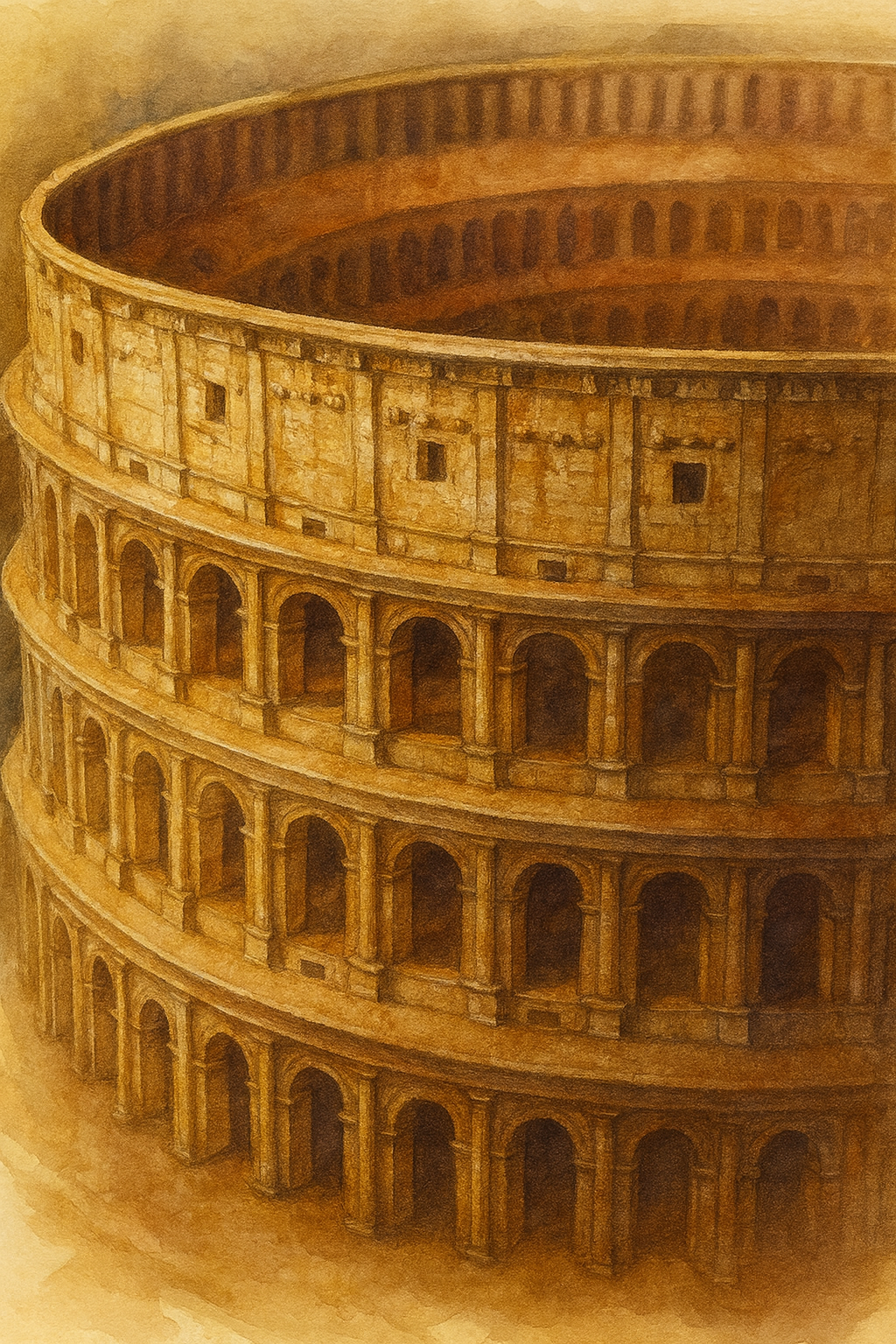
Ancient Rome
Homeschool Book & Curriculum Haul
What happens when you forgot you placed a homeschool supplies order? You're a little confused, but you get extra happy mail! And a unique book haul where I say often, "I can't remember this book!"
We have three history units coming up: Middle Ages, Ancient Greece and Ancient Rome. Many of these books are for those units. Following the haul video, you can see how I put these units together and what projects we did for them.
When we do our history units, we have a mix of non-fiction and historical fiction as well as activity book and cook books (if possible!).
All these books were purchased from Rainbow Resource using educational funding from our charter school.
Why does the Plutarch book have a funny backstory? Well in 2017, Challice from Sodbuster Living came to visit me and together we recorded a video. She mentioned the difficulty in teaching Plutarch and I stared blank faced. I couldn't recall Plutarch at all. So here we are now, finding a book on Plutarch aimed for kids...and adults who seem to have forgotten those lessons from their own education ;)
How to do a Unit Study: Ancient Rome
Join me as I put together our Ancient Rome unit study. You'll get great tips on putting together unit studies in general while you view books specifically for our Ancient Rome unit.
I like to cover three areas of learning when teaching history:
1-Belief (religion or mythology) of the people
2-Culture or daily life
3-Historical events
I do this in the following ways:
Historical fictions
Biographies/autobiographies
Hands-on activities
History books
Interactive projects
A book on Mythology or religion
Our units run 6, 9 or 12 weeks. We sometimes break up a larger unit into smaller units and spread them out.
Once I get all my materials, I sort through everything and figure out how long it will take to cover each book and do each activity. Then I break down the work daily.
For assessment of learning, the kids usually write a narration about the lesson and make an illustration. We'll engage in light discussions while I reading the books and occasionally they will orally narrate their lessons in addition to writing them down.
Hands-on activities are usually done as a family as younger siblings like to participate and usually adult help is needed.
We like to work with the seasons and tend to do the heavier brain work in the fall like grammar and math, then history in the winter when all we want to do is cozy up and read, and science in the spring when we just want to be out and can't sit still.
I use the Waldorf curriculum from Live Education.
as my default curriculum and find most of our supplements for our curriculum from Rainbow Resource.
Rainbow Resources has a great search engine, so I love to browse by subject to get ideas. Plus their prices are reasonable. But don't underestimate what you can find on your own bookcases, at your local library or from friends!
I love doing projects with the kids, and many times the projects come together with supplies we already have.
Roman History Unit Study | How-to Process from Start to Finish
It's time to start a new unit and this time I'll walk you through the process of putting together a unit study from start to finish. The only thing I've put in a separate video is the lesson planning process. We've already done a lot of projects during our last Ancient Roman History unit and I'll add new videos to that playlist.
When putting together a history unit, I look for books/resources in the following topic areas:
History (famous people, timeline history, historical events)
Biographies (picture books work great for biographies)
Geography (a single atlas book does fine)
Historical fiction (a great way to get your history/culture in a fun book)
Culture/food/clothing (cook up a dish from the time period)
Audio books/songs (music from the time period is fun to listen to)
Projects/Activities (pre-made kits are a go-to staple around here)
Games (Professor Noggins are our favorite)
Workbooks (use sparingly or skip and do narrations)
Picture books (surprisingly informative & fun)
Activity and project books (Lauri Carlson has several)
Science/math (adding other subjects rounds out your unit)
Two more things I use for lesson planning are full back Post-its sticky pads and a pencil. I write notes about each book/resource on the sticky pad and stick it on the front cover of the book for easy lesson planning.
Lesson planning has been in flux for about a year or two. Currently you can find lesson plans for this unit graciously assembled by Sayeda at Precious Years exclusively for Homeschool Panda. Follow link below to access.
Ancient Roman History Lesson Plan
Ancient Rome Lesson Plans Week 1-6
You can also get these plans on Homeschool Panda. Follow the steps below:
Step 1: Log into Homeschool Panda
Step 2: Click on "Lesson Planner” from left hand pane
Step 3: Click on “Import Lesson Plan” located on the top right
Step 4: Paste this link:
https://app.homeschoolpanda.com/lessons/export/a2e33ed4afaaf02e3366
Once Lesson Imported, you can assign to a student.
How to Lesson Plan or Homeschool
The process of lesson planning seems to be a mystery because so much of what is shown are the final stages of lesson planning, the point where page numbers and book titles are being added into the lesson plan, but how it got there is still a mystery. How do you choose books? Which ones are assigned to the student? Which ones are read alouds? Though you'll see me do this as well, I'm going to attempt to show you my process of how I pick which resources will go into which weeks of our six week main lesson block for Ancient Roman History.
This kind of lesson planning may be different than what you're used to. Instead of a continuation of books and workbooks that span the year, each new unit is a lesson plan unto itself. The benefit of this is that every 1-2 months is like starting school again which is exciting and something we look forward to, at the same time, it requires time to put the lessons together.
I try to plan out the lessons for the whole block at one time, but if it weren't for sharing on this platform, I would have only done one week at a time. It's better to do the whole block at one time, even there are blank spaces in the lesson plan to be filled in later because it gives you a bird's eye view of the unit and allows for better planning overall.
For this unit, since we had all the materials already, I won't show you the process of choosing which books to buy. In general I'll check out the books and projects at Rainbow Resource and choose from their offerings. I did pick up some new books for this unit that I'm excited to use and we'll be returning to some old favorites. For a complete review of these materials, check the last video in the Ancient Roman History playlist at the conclusion of this unit to see how we liked the books and projects and which ones we skipped and why.
There will be changes to the lesson plan, so at the end of this main lesson block, I'll share the updated lesson plans so you can see the changes.
When putting together a history unit, I look for books/resources in the following topic areas:
History (famous people, timeline history, historical events)
Biographies (picture books work great for biographies)
Geography (a single atlas book does fine)
Historical fiction (a great way to get your history/culture in a fun book)
Culture/food/clothing (cook up a dish from the time period)
Audio books/songs (music from the time period is fun to listen to)
Projects/Activities (pre-made kits are a go-to staple around here)
Games (Professor Noggins are our favorite)
Workbooks (use sparingly or skip and do narrations)
Picture books (surprisingly informative & fun)
Activity and project books (Lauri Carlson has several)
Science/math (adding other subjects rounds out your unit)
Two more things I use for lesson planning are full back Post-its sticky pads and a pencil. I write notes about each book/resource on the sticky pad and stick it on the front cover of the book for easy lesson planning.
Lesson planning has been in flux for about a year or two. Currently you can find lesson plans for this unit graciously assembled by Sayeda at Precious Years exclusively for Homeschool Panda. Follow link below to access.
Ancient Roman History Lesson Plan:
Steps to import lesson plan from Homeschool Panda:
Step 1: Log into Homeschool Panda
Step 2: Click on "Lesson Planner” from left hand pane
Step 3: Click on “Import Lesson Plan” located on the top right
Step 4: Paste this link:
https://app.homeschoolpanda.com/lessons/export/a2e33ed4afaaf02e3366
Once Lesson Imported, you can assign to a student.
You can also download Ancient Rome Lesson Plans Week 1-6 I've left it as is so you can make changes to the lesson plan and customize it for your homeschool needs.
Roman Soldier | Waldorf Chalk Drawing
This is a chalk drawing of an ancient Roman soldier for our Ancient Rome unit. We are using a Waldorf curriculum by Live-Education, but often travel down our own path. To view or purchase curriculum visit Live Education.
This drawing took about 30-40 minutes.
Supplies used: Sargent Art Square Chalk Pastels and Usborne Encyclopedia of World History. Other reference books are "Going to War in Roman Times" by Moira Butterfield and DK Eyewitness Book "Ancient Rome".
We have a mobile chalkboard/dry erase board that is 4'X6' by Ghent.
Chalk can be purchased at Waldorf Supplies.
Chalk Drawing | Ancient Scroll
We continue our Ancient Roman unit with this time-lapse chalk drawing of an ancient Roman scroll. Today I am using my mounted chalkboard which is six medium sized chalk boards mounted flush to the wall with no gaps between the chalk boards. Still it is hard to get a smooth drawing with all the seams.We used the book The Usborne Encyclopedia of the Roman World as a reference.
We are using a Waldorf curriculum by Live-Education, but often travel down our own path. To view or purchase curriculum visit Live Education.
This drawing took about 30-40 minutes.
Supplies used: Sargent Art Square Chalk Pastels and Usborne Encyclopedia of World History.
We have a mobile chalkboard/dry erase board that is 4'X6' by Ghent.
Chalk and chalkboards can be purchased at Waldorf Supplies.
How to Make String Art
You can make this string art as part of a geometry unit or Ancient Rome/Greece unit. We are using the book called "Classical Kids An Activity Guide to Life in Ancient Greece and Rome" by Laurie Carlson as inspiration for this project.
Supplies needed: Paper, ruler, pen, scissors, pencil or pen, thread or floss and a needle. Optionally: Silhouette Cameo, and paper piercer or safety pin.
I used my Silhouette Cameo to cut the templates, but you can make them using a ruler and a pair of scissors.
Supplies can be found at a local craft store and book can be found at Rainbow Resource or Amazon.
Level: 5-6 years and up
Duration: less than 10 minutes
Prep time: less than 10 minutes
Cost: less than $1
How to Make Roman Armor
We continue our Ancient Roman unit study with this suit of armor we made using cardboard and fabric.
We used flat pieces of cardboard which we spray painted with Rustoleum Hammered Metal paint to give the cardboard a metallic look. We cut it into 5" strips and fastened the strips together using metal brads.
For the shield we shaped a piece of cardboard so it was a rounded rectangle, then painted it to look like leather and decorated it with a leaf pattern.
For the tunic, we used some old red curtains and cut them into the shape of a long t-shirt that is flared at the bottom.
The helmet was the most difficult piece. I used many small strips of cardboard and metal brads to shape the helmet.
We used a large dowel to represent a spear and some swords we already had to finish off the look.
Supplies: cardboard, silver spray paint, acrylic paint, large metal brads, metal clasp, adhesive and red fabric.
Tools needed: scissors and sewing machine.
Making a Model of the Colosseum
In today's project, we attempt to construct a model of the Colosseum using a kit by Cubic Fun. You can find it at Rainbow Resources.
Watch us as we make one mistake after another while constructing this model. It is made from foam core board and actually shouldn't take too much time if you avoid making the mistakes we made.
The finished product is sturdy and beautiful but can easily get broken if it is mishandled. This project is well-suited for kids 10 years and up, but adult help is probably needed as it was for us.
How to Make an Ancient Roman Meal
For our ancient Roman unit, we were inspired to make a Roman meal based on the book we read by DK Eyewitness Books "Ancient Rome".
We made some innovations and alterations based on the availability of seasonal food.
We made Cornish game hens instead of song birds. We seasoned them with rosemary and spices. From the pan drippings we made a 'white' sauce by mixing it with flour in our NutriBullet. We had a platter of celery and olives, and one with grapes. We frequently have dates and figs, but forgot to add it to this meal.
We baked olive and rosemary bread and dipped it in olive oil.
Here's the bread recipe:
4 cups of flour
2 cups of water
1 tablespoon sugar
1/2 teaspoon of salt
1/4 teaspoon yeast.
Mix ingredients together. Let it rise for 2-3 hours. Shape into rolls and bake for 12 minutes at 430 degrees.
Ancient Rome Excavation | ROMAN SUNDIAL | ROMAN VASE
For our Ancient Rome unit, the kids excavated a Roman sundial, bowl and vase. The project took about a week to complete. The product called "Dig, Discover and Display" can be found at Rainbow Resource.
How to Make a Fold Out Timeline Book | Tutorial
Learn how to make this beautiful and sturdy fold out timeline book. It can be as long as you need it, as you can continue to add pages to the timeline without adhering it to the back cover.
Most materials can be found at http://www.dickblick.com or local craft stores.
Materials used: Lokta paper (hand made paper from Nepal), drawing paper, chipboard (we used the back cover of a drawing paper pad), ruler, pencil, scissors, paper trimmer, X-Acto knife, spray adhesive, double-sided tape, and tape. Optional: Silhouette Cameo and Xyron sticker machine (or you can use letter stickers for title).
Duration 30-40 minutes
Level: adult (intermediate)
My kids love these kinds of projects. They love to look at the work they've done and flip through the pages. They feel really accomplished when they complete a project like this.
Roman Meal video, click here.
Complete Ancient Rome Playlist, click here.
Making Maps with Distress Inks
This project uses the Silhouette Cameo cutting tool and program. We used a map from the workbook "Greek & Roman Mythology", scanned it and opened it in the Silhouette program. We used the "trace tool" to trace the map and create a stencil. We used the erase tool to clean it up so it would just be a stencil of the map of the Mediterranean Sea and surrounding areas. Then my eight-year old traced the map, embossed the bordered and filled in the areas with distress inks. The finished project was labeled and placed in his main lesson book for Ancient Rome along side a paragraph narration about the founding of Rome.
Circle Weaving
We are using the book "Classical Kids An Activity Guide to Life in Ancient Greece and Rome" by Laurie Carlson as inspiration of this project. You can find the book at Rainbow Resource For this project you will need embroidery string or floss, cardboard or chipboard, scissors, yarn, a bowl to make a circle and a shuttle (we used a popsicle stick). Optional: compass, protractor, knitting needle. Some supplies can be found at A Child’s Dream. For a circle with a diameter of about 5", the project takes about an hour to do. Level: easy The only complicated part of this project is making sure you wind the string around the notches correctly. Make sure you have an odd number.
Hanging Solar System Mobile | Astronomy Project
We got this hanging solar system mobile project from the book "Classical Kids An Activity Guide to Life in Ancient Greece and Rome" by Laurie Carlson . This activity works well for an astronomy unit or for an Ancient Rome unit. We used watercolor paper, Tim Holtz Distress Inks, DMC metallic thread, paint brushes, spray adhesive, glue and scissors or a circle cutter (we used the Silhouette Cameo). Supplies can be found at Dick Blick and A Child’s Dream. Complete playlist for Ancient Rome and Astronomy.
Level: Easy
Duration 1-2 hours
Cost: $5 (unless you don’t have any products, then you’ll have to invest in a pad of paper and watercolors)
Diameter sizes:
Mercury- .4″
Venus- 1″
Earth- 1″
Mars- .6
Jupiter- 12″
Saturn- 10″
Uranus- 4″
Making Ancient Roman Maps with Watercolor Pencils
Today we continued our map making project using the stencil we cut using our Silhouette Cameo. My 8th grader traced the map and filled it in with Koh-i-Noor watercolor pencils from Blick Art Supplies. He then blended the colors with water and finally labeled the map and put it in his main lesson book along side a narration on the founding of Rome.
How to Make Ancient Roman Sandals
For all our unit studies for homeschool, we try to do some hands on projects and activities. For our Ancient Roman history main lesson block this time around, we used the book "Classical Kids An Activity Guide to Life in Ancient Greece and Rome" by Laurie Carlson as inspiration for projects.
Today we're making some Roman sandals using some leather remnants we got second hand. Because our leather pieces were so small, we had to alter the design a bit. These are very basic and work well for our history unit, but may not be historically accurate. Regardless, the spirit of the project was far more memorable than working towards historical perfection.
For this project you will need some sturdy fabric large enough to to fit your feet with about a 2 inch addition all around. You'll also need more fabric to cut long strips for the straps. Additionally, you'll need paper, pencil and scissors.
Duration of project: about 30 minutes
Cost: minimal and can be made using spare fabric from old clothes if necessary
Level: easy
Check out the other videos in our Ancient Rome main lesson block.
Ancient Roman Mosaic
For our Ancient Roman main lesson block for homeschool, we did a number of hands on activities and projects and many of them come from the book "Classical Kids An Activity Guide to Life in Ancient Greece and Rome" by Laurie Carlson. This book is chock full of fun, educational and best of all easy activities you can do to enhance your unit of Ancient Rome or Ancient Greece. The projects are simple enough to do in an afternoon and are perfect for homeschool or the classroom.
I'll show you two projects: one classic one using tiles and the other is a simple paper version you can do easily or take your time with it and make it more complex and time-consuming. Either method gets a little laborious and while our paper mosaic was fairly straightforward, none of us were especially proud of our finished project. I think it would have looked better if we used smaller paper tiles.
Our Golden Gate Bridge Mosaic Kit was such a winner. It contained high quality tiles, strong glue and a frame board made of sturdy chipboard. We got this kit from the Golden Gate Park gift shop and while I would have loved to make the image on the box, we opted to make something that was both visually significant as well as artistically relevant for Ancient Rome.
You can check out more projects and tutorials for our Ancient Rome unit which now spans two separate units by click here.
Ancient Rome Curriculum Review
Not only is this a review of the materials we used for our Ancient Roman History main lesson block, but it's also an insight in how we do our main lessons or unit studies. I share clips of my children doing their work throughout this unit during the video as well as my son's main lesson book so you can see the work he completed during this unit.
You can see how we put this unit together by checking this video.
This is our third time doing this unit and over the years, I've collected an number of resources to add to our main lesson book or to depart completely and create our own unit studies. Some were enjoyed by my children and others were not. I'll share my experiences with these books, activities and projects. Also, I've used far more materials than what is necessary to do a successful unit study. I share my top picks and must haves. When it comes down to the main book or spine for your unit study, it's a toss up between The Story of the Romans by H. A. Guerber and Ancient Rome by Charles Kovacs.
Ancient Rome by Charles Kovacs.
Take your guess as to which of those two resources I recommend. You can leave your guess in the comment section below.
Here's the complete Ancient Roman Playlist with all the videos that accompany this unit.
When putting together a history unit, I look for books/resources in the following topic areas:
History (famous people, timeline history, historical events)
Biographies (picture books work great for biographies)
Geography (a single atlas book does fine)
Historical fiction (a great way to get your history/culture in a fun book)
Culture/food/clothing (cook up a dish from the time period)
Audio books/songs (music from the time period is fun to listen to)
Projects/Activities (pre-made kits are a go-to staple around here)
Games (Professor Noggins are our favorite)
Workbooks (use sparingly or skip and do narrations)
Picture books (surprisingly informative & fun)
Activity and project books (Lauri Carlson has several)
Science/math (adding other subjects rounds out your unit)
Two more things I use for lesson planning are full back Post-its sticky pads and a pencil. I write notes about each book/resource on the sticky pad and stick it on the front cover of the book for easy lesson planning.
Lesson planning has been in flux for about a year or two. Currently you can find lesson plans for this unit graciously assembled by Sayeda at Precious Years exclusively for Homeschool Panda. Follow link below to access.
Ancient Roman History Lesson Plan
Steps to import lesson plan: Homeschool Panda
Step 1: Log into Homeschool Panda
Step 2: Click on "Lesson Planner” from left hand pane
Step 3: Click on “Import Lesson Plan” located on the top right
Step 4: Paste this link:
https://app.homeschoolpanda.com/lessons/export/a2e33ed4afaaf02e3366
Once Lesson Imported, you can assign to a student.
You can also find the lesson plans on my website. I created my plans using Mac Numbers sheets. I like to get a full week of lesson plans on a single sheet of paper.
Check out our last Ancient Roman History unit.
Minute Markers:
2:13 History Spines for Unit Study
14:20 Historical Fiction
22:50 Picture Books and more
25:50 Mythology
26:37 Math + History
27:37 Hands on projects. toys and audio
34:15 Activity Books
38:02 Gladiators and the Army
40:47 City & architecture
42:24 Pompeii
48:10 Main lesson book
53:44 Reveal which book I prefer
